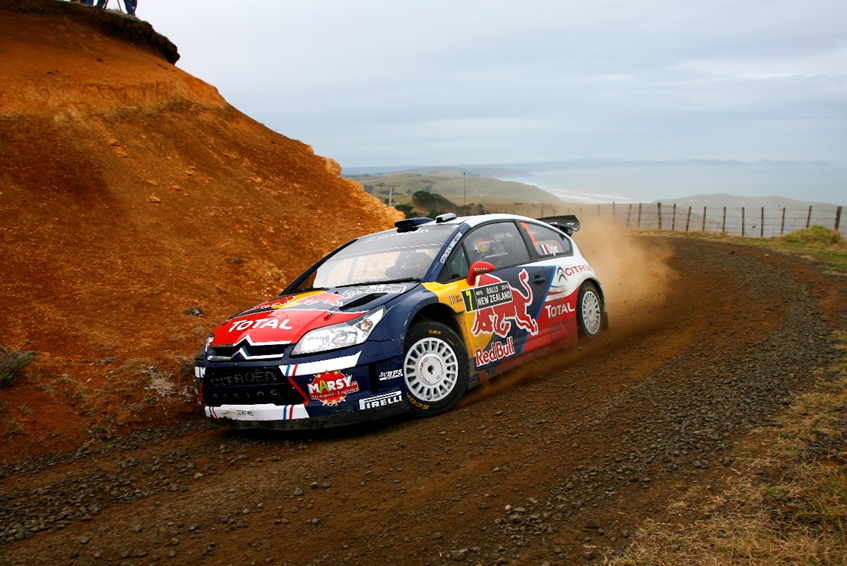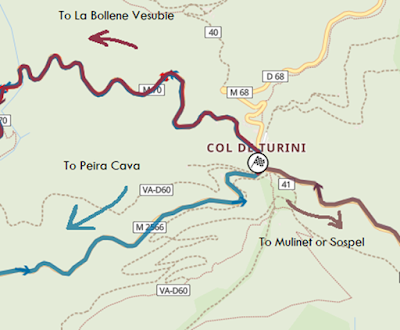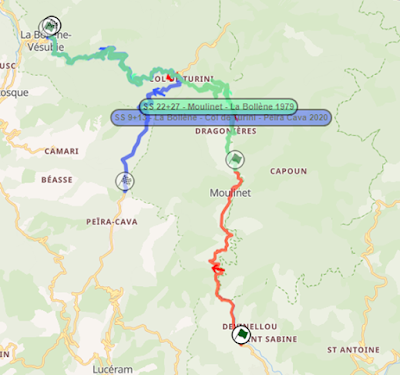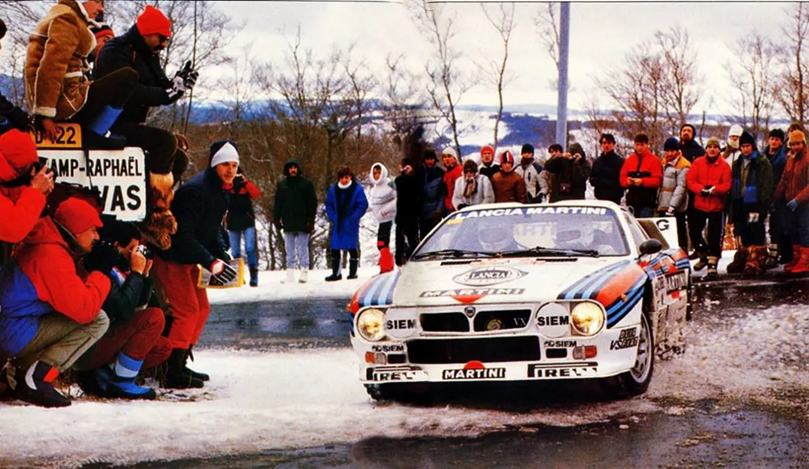Top 30 Stages in WRC History: 1-5
The poll is closed, and the results are ready to be announced!
We asked you for your favorite WRC stages and you had your say. Each voter selected 15 stages out of a pool of 100, and the 30 stages that had the most votes, combined with our experts’ ratings made it to our list. This was a collaboration between us and Antti from itgetsfasternow.com, this list wouldn’t have been possible without him, so please go check his blog. He will have his own unique post based on this list when all the stages are revealed.
Throughout this month we’ll be going through the results, and this is the final part, these are the last 5 stages! So here we go:
5 – Whaanga Coast – Rally New Zealand
We
start out our Top 5 with Rally New Zealand’s Whaanga Coast. This sea-side
gravel road is a legendary Rally New Zealand stage, and a favourite among
drivers and fans alike. Whaanga Coast first appeared in the WRC back in 1990.
Debuting as Whaanga Road, this first version of the stage only featured the
iconic, sea-side, flowing and cambered part. After 1990, the stage adopted it’s
classic and commonly used 29-kilometre layout. Ever since 1991, Whaanga Coast
has featured in every Rally New Zealand, with the exception of 2003, with the
layout being virtually unchanged. The only significant change Whaanga Coast has
had is that after 2001, the stage has been ran in reverse, with the stage
finishing in the sea-side part rather than starting from it. The stage itself
is actually one of the slowest of Rally New Zealand, with it being the slowest
(non-manmade) stage of the 2022 rally. But what the stage lacks in speed, it
has in flow, with the stage featuring many cambered bends and crests, that make
the stage a joy to drive. The first part of the stage is semi-fast, with the
famous part next to the sea being more twisty and technical.
Famous moments include a four-way fight for the lead in 2010 between Latvala, Loeb, Solberg and Ogier with all of four suffering problems or crashing in Whaanga Coast, Greensmith winning the stage and Breen going off in 2023, Latvala and Duval crashing in 2008, Hirvonen getting a puncture and spinning handing the lead to Loeb, Xevi Pons winning the stage by 11s in 2006, Petter Solberg spinning and losing the lead, as well as Duval crashing and Rovanpera losing a minute in 2004, Colin McRae going off in 2002, Colin McRae retiring from the lead in 1999 and Colin McRae going 14s fastest than everyone in 1994 and going into the lead of the rally.
Map of Whaanga Coast.
4 – Sisteron – Rally Monte Carlo
If
you are an old season review buff like myself, you’d know this stage as “The
Mighty Sisteron”, as this was what it would be called by the commentator. And
that name is no fluke. Sisteron is known for its unpredictable conditions, with
the drivers having to face every Monte-Carlo condition possible, in just 36km.
First ran in 1979, Sisteron has its own chapter in Rally Monte-Carlo’s history.
From 1979 to 2002, the stage was only absent from the rally in 3 occasions.
After an 11 year absence, Sisteron returned for 2013, and featured regularly,
always as a one-pass stage until 2018. In 2022, the stage abandoned the
Sisteron part, and started at the village of St Geniez, shortening it’s milage
to 20km. It still featured snow though, and was the stage that gave us the most
drama in 2022. It was also set to be ran for 2023, but it was cancelled due to
the road being in a poor state, but it’s set to be back for 2024 as the opening
test. Running from the town of Sisteron to the village of Thoard (or vice-versa),
the stage climbed the mountain, and then descended it. That meant that the
crews were likely to encounter both dry conditions at the start and finish of
the stage, and full snow and ice conditions on the top of the col. That meant
that tyre choice was a headache for the drivers, with many ending their rallies
in Sisteron.
Famous
moments include Elfyn Evans and Katsuta going off the road and Tanak crashing
out in 2022, Thierry Neuville getting stuck in a ditch and losing 4 mins in
2018, Kris Meeke breaking his gearbox in a compression and retiring from 2nd in
2016, Sebastien Loeb going 18s faster than everyone and into the lead in 2002,
Tommi Makinen losing the lead to Pierro Liatti in 1997 after a wrong tyre call,
Colin McRae crashing out of the rally in 1995 and Carlos Sainz crashing out in
1989.
Map of Sisteron-Thoard, along with
the 2022 stage.
3 – Panzerplatte – Rallye Deutschland
Located
in the Baumholder Military area, Panzerplatte is a stage that brings fear to
the drivers. First used in 2002 in the inaugural Rallye Deutschland,
Panzerplatte featured in every edition until the rally went out of the calendar
in 2020. Panzerplatte is famous for its hinkelstein stones, that were designed
to keep the tanks on the road. These trapezoid shaped rocks are a known hazard
and claimed countless victims in that 18-year span.
The famous Hinkelsteins.
Panzerplatte is another stage that has used a myriad of different layouts along
the years, utilizing the many service roads of the military base. What most of
these layouts have in common is the difficulty. The stage is a very rough stage
even if the drivers keep their car on the road, as the surface changes from
concrete and very abrasive asphalt that kills the tyres, to smooth tarmac that
you’d find on a highway. On top of that, Panzerplatte is also traditionally a
very long stage, with all of the non sss versions being over 30km long. In 2010
and 2012 the stage was 48 and 46 kilometres long, without even having the same
start or finish! Another characteristic this stage is famous for is Gina’s
jump. The part of the stage that was used in the Arena Panzerplatte stage is
known as Gina, with Gina referring to Italian actress Gina Lollobrigida. This
section of the stage from the map vaguely resembles curves that someone could
see on a person, and the Germans decided to pay tribute to the Italian actress
by naming this section in her honor. The jump comes after a flat-out section
and is a spectator favourite, as cars go flat-out and have a long-distance jump.
It is also worth mentioning that some other stages have shared parts of their
route with Panzerplatte in the early years of Rally Germany, namely Hahlkreuz
and Maiwald in 2002 and 2003.
Maps of Hahlkreuz and Maiwald
alongslide Panzerplatte’s 2002 route.
Famous moments include Sebastien Ogier and Thierry Neuville both getting punctures in 2019, Sebastien Ogier getting a puncture and dropping out of winning contention in 2018, Thierry Neuville’s suspension collapsing in 2017, Stephane Lefebvre having a massive accident in 2016, Bryan Bouffier clipping a hinkelstein and rolling out of the rally in 2014, Ott Tanak, Petter Solberg and Thierry Neuville all crashing in 2012, Sebastien Loeb losing the win to Sebastien Ogier in 2011 because of a puncture, Petter Solberg having a massive accident in 2004 and Achim Mortl, Philippe Bugalski, Armin Schwarz, Petter Solberg and Toni Gardemeister going off in the tricky wet conditions of 2002.
The 2019 versions of
Arena Panzerplatte and Panzerplatte.
2 – Col De Turini – Rallye Monte Carlo
Standing
1700m high in the French Alps, Col De Turini is a stage that characterizes
Rally Monte Carlo. First ran in the 70s, this river of tarmac is full of
hairpins and is known for its pass through the Col De Turini Mountain pass. Col
De Turini has featured in the WRC with many different names, either as Col De
Turini, or depending from where the stage starts and finishes, one could find the
names La Bollene Vesubie, Peira Cava, Moulinet and Sospel. Just know if you see
either of these, it means the stage has the Col De Turini in it. To simplify
stuff, there’s three different versions of this stage that you need to know
about. The version of Col De Turini that goes from La Bollene to Peira Cava (or
vice versa), the version that goes from La Bollene to Mulinet (or vice versa)
and the version that goes just a bit further from Moulinet, to Sospel.
A simple diagram that shows what
version of the stage you are watching based on where the cars go when they are
on the Col.
There
are some other versions of Col De Turini worth mentioning, namely last year’s
powerstage, with the stage starting in La Bollene and ending on the Col (a
similar layout was also used in 1997), and Col de Braus - La Bollène-Vésubie
from 2009 (in the IRC though), which is a combination of La Bollène-Vésubie –
Peira Cava, Col De Braus and Luceram. A feature of this stage is the changeable
conditions drivers face when climbing up to the Col, with snow and ice being
something the crews would encounter regularly, especially back in the day. The
stage is technical with many downhill and uphill hairpins, especially in the
Mulinet/Sospel part of the stage. In contrast, the part of La Bollène-Vésubie
on the approach to the Col is more fast and flowing. When the stage was ran in
the dark, the atmosphere in Col De Turini had the nickname of “the night of the
thousand knives”, with French and Italian fans lighting flares on top of the
Col, making for an atmosphere that I could not make justice to just from text.
Famous
moments include Kalle Rovanpera shockingly being the slowest of the Rally1
drivers on SS2 in 2022, Esapekka Lappi and Bryan Bouffier going off but
continuing in 2018, the slippery conditions drivers had to deal with when it started to snow in the powerstage in 2017, Robert
Kubica crashing after the stage end in 2016, the massive snow of 2013 that led
to the 3rd pass that was the powerstage being canceled, Sebastien
Loeb being the fastest in 2/3 runs en route to 2nd despite super
rallying in 2006, as well as Xevi Pons spinning three times in one pass, Petter
Solberg and Marcus Gronholm going off in 2005 on the same spot, Colin McRae
spinning on top of the Col in 2002, Colin McRae retiring from the lead when his
Focus developed a mechanical fault in 2001 and again in 2000 this time from 3rd,
Gilles Panizzi crashing off from 2nd in 1999, Gilles Panizzi going
fastest in 1998 in the F2 Kit Car, Didier Auriol and Armin Schwarz retiring in
1995, Francois Delecour losing out on a maiden win in 1991 after going off and
losing 5 mins, with the Frenchman being inconsolable at the finish.
La Bollene, Moulinet, Sospel and Peira
Cava. All passing through the Col De Turini.
1 – Ouninpohja – Rally Finland
Is
anyone really surprised? Ouninpohja makes it as the best stage in the history
of the WRC! And what a stage. First ran in 1966 as Alhojärvi, Ouninpohja is a
legendary road with a long history in rallying. The legendary name “Ouninpohja”
first appeared in 1967. Before I start describing Ouni’s history, I have to
give you a small rundown of the parts of the stage I will be describing later
on.
The 3 different roads that make up the
classic Ouninpohja route, along with where the Yellow House Jump and where the
Kakaristo Junction is. Two famous Ouni spots.
From
1971 to 1985, the stage started in the famous Kakaristo junction and finished at
Hämepohja, in the reverse direction of the modern stage. In 1986, the stage was ran as a
7.3km stage starting at the yellow house jump, and finished again at Hämepohja.
The stage of Rapsula was also in the 1986 route, utilizing parts from the Okskulmantie
part of the stage. In 1987, the classic Ouni route was basically split into 3
parts, with Rapsula again utilizing the Okskulmantie road, and parts of Ouninpohjantie
as well. Konivuori used a combination of a route last used by Hassi in 1993, that
joined the Ouninpohjantie and finished 3km before Hämepohja. And Ouninpohja itself
started near where Rapsula did, and joined the traditional Ouni route near the
yellow house, and finished in Hämepohja. The name Ouninpohja was absent from a
1000 Lakes itinerary for the subsequent 4 rallies, but stages like Konivuori,
Hassi and Rapsula all used parts of the legendary stage. The stage returned in
1992, using the Pitkäjärventie road for the first time. Its length was 30km,
and ended at the Square Left junction that leads to the flatout section before
the yellow house jump. The same route was used in 1993.
The dichotomized 1987 route. With red
is Konivuori, in purple is the modern classic Ouni route, in blue is Rapsula
and in light green is 1987 Ouninpohja.
Rapsula, Kakaristo and Kakaristo
Hassi. The stages that have used parts of Ouninpohja since 2018.
That’s
the basics for Ouninpohja, if you want to learn more about the history and with
more detail, check Antti’s series about Ouni here. The Ouninpohjantie part of
the stage is fast, known for its flat out section and the yellow house jump. It
is still quite technical, with many drivers getting caught out especially in
the beginning. Okskulmantie is wider and more staright forward than the
previous part, especially the parts not used by Rapsula or Kakaristo nowadays.
After Kakaristo’s junction, Pitkäjärventie is a narrower and a lot more
technical part. It’s a lot more rough and a real big change of rhythm compared
to the previous parts. The stage rejoins a wider road and finishes on a flatout
section.
If you made it this far, and read all 6 parts of this series, I want to say a massive thank you! You are a legend. I also want to give a special thanks to Antti, for helping me along the way, this wouldnt have been possible without him. Stay tuned for his special post about the Top 30!


















Comments
Post a Comment